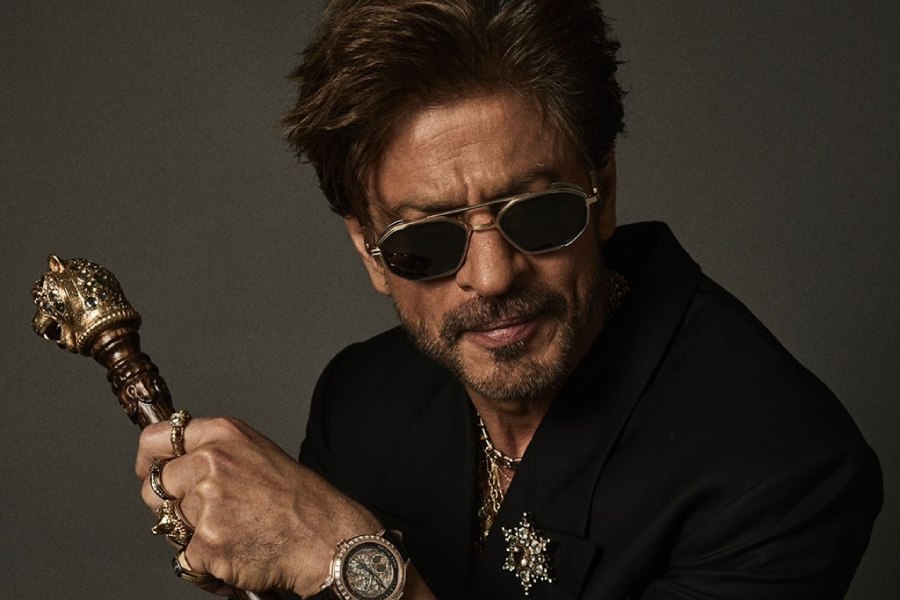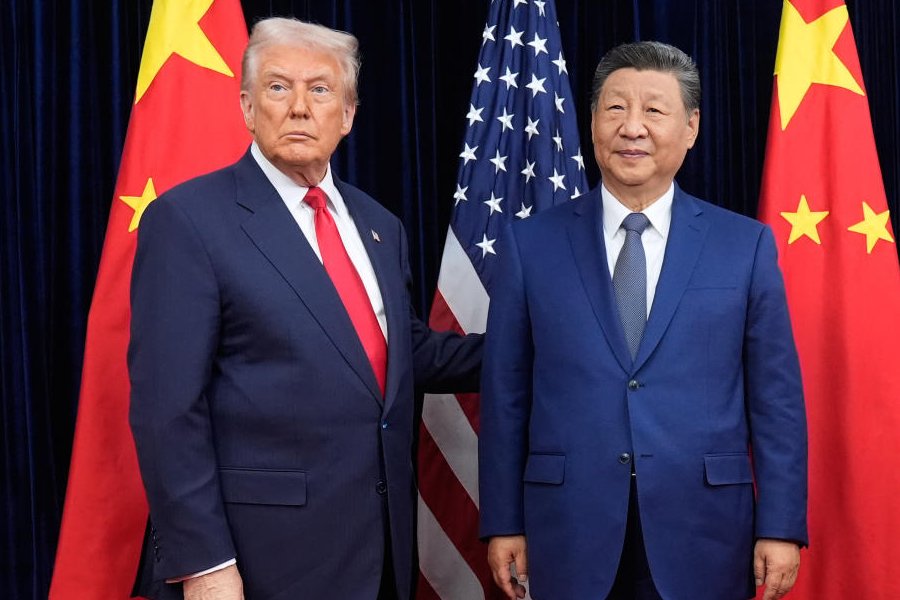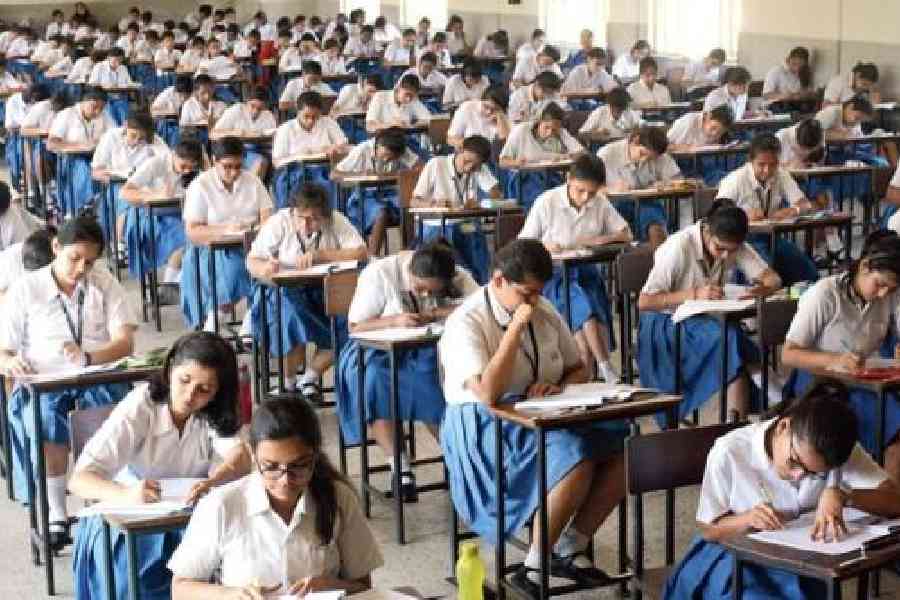 |
| PLAY IT AGAIN: Debjit Bandopadhyay and others at a rehearsal for ‘Theataari’. (below) Posters of yesteryear plays Chowringhee and Katha Kao |
 |
 |
Debjit Bandopadhyay, a Bengali theatre researcher, is busy rewriting a script for Chowringhee. Shankar’s literary masterpiece was not only transcreated on celluloid but was also a huge success on the Bengali stage in the late 1970s. “It was a landmark play because it introduced cabaret to Bengali audiences. Chowringhee marked the birth of a cabaret star called Miss Shefali,” recalls Bandyopadhyay, who’s also preparing the script for Samrat Sundari, loosely based on the life of theatre producer Rashbehari Sarkar. “We have to recreate some of the scripts because most of the scripts are now lost,” he adds.
Bandopadhyay, along with his wife, singer Riddhi, were part of an ensemble that relived the Bengali commercial theatre era at a city club yesterday. Theatre veterans Sabitri Chatterjee, Manoj Mitra, Jagannath and Urmimala Basu and today’s Bengali television heartthrob Debalina Datta came together to read from plays such as Mallika, Dampati, and of course Chowringhee and Barbadhu — all of which were great hits in those halcyon days of Bengali commercial theatre. And Sabitri Chatterjee performed the wrenching last scene from Mallika after more than 20 years.
“Though most people say that Bengali commercial theatre died in the 1980s, there have been sporadic successes even in the 1990s such as Soumitra Chatterjee’s Neelkantha or Ramaprasad Banik’s Bhalo Kharap Meye, starring Aparna Sen,” says Sujoy Prosad Chatterjee, who conceptualised the play reading session called ‘Theataari’.
‘Theataari’ is but one among several efforts to revive commercial Bengali theatre today. Over the past few years, a number of initiatives — stage productions, play reading sessions and theme-based programmes on theatre — have been taken to rekindle audience interest in this type of theatre.
Take Niva Arts, for instance. The production house has dedicated itself to the task of reviving commercial Bengali theatre. “We have staged many plays and received encouraging audience response. We want to make south Calcutta the hub for such theatre. In fact, we can say that the north Calcutta theatre scene is now shifting to the south,” says Samar Mitra, founder, Niva Arts, which has taken two theatre halls — Tapan Theatre on Sadananda Road and Sujata Sadan in Hazra — on lease.
As Mitra points out, part of the problem of resuscitating commercial Bengali theatre has been the absence of dedicated auditoriums. Biswarupa, Rangana, Rangmahal and Circarena, once the citadel of Bengali theatre, have passed into oblivion. Biswarupa has been razed to the ground. Rangmahal is now a marriage hall. Rangana and Circarena are in a shambles. Star and Minerva are the only two halls that exist — but even these are often used to host film shows or workshops.
But thanks to the efforts of people like Mitra, commercial theatre is once again on the upswing. At Tapan Theatre, Soumitra Chatterjee’s Homa Pakhi will be playing on Thursdays and Sundays from next month. Some of the recent successes at Tapan Theatre include Arun Mukhopadhyay’s comedy, Lagle Bolben which ran for 200 nights and Ashok Chattopadhyay’s Astarag which has already completed 50 nights.
Actress Chaiti Ghoshal, also starred in Niva Arts’s Bhalobashi Tai (2006), agrees, “The response to Bhalobashi Tai was quite overwhelming. I remember people queuing up to me after the show outside Tapan Theatre to congratulate me on my performance,” says Ghoshal.
The origin of professional board theatre — distinct from amateur or group theatre that primarily believes in the social or political purpose of art — can be traced to Girish Ghosh, playwright, actor and director, in the late 19th century. Then came the era of Shishir Bhaduri, another legendary professional theatre personality. “Post World War I, some people got rich and started investing in commercial theatre,” says Bandyopadhyay.
Another reason people flocked to commercial theatre was that film stars often starred in them. In fact, since the 1950s, Bengali commercial stage shared a symbiotic relationship with films. Actors who straddled both the stage and the celluloid included Sabitri Chatterjee, Supriya Devi, Basabi Nandi, Biswajeet and Saumitra Chatterjee.
Today, every effort is being made to document and showcase that rich theatrical past. A few years ago, Academy Theatre, a theatre group engaged in the research and production of commercial Bengali plays, made Rangarasher Manchagaan — a medley of musical comedies that were popular between the early 19th century and the middle of the last century. In 2007, the group hosted a four-day theatre festival dedicated to the works of the legendary 19th century Bengali theatre actress Noti Binodini.
Academy Theatre has also built up a commendable archive. The collection includes manuscripts dating back to 1779, rare photographs, and musical instruments used on stage in the past couple of centuries. There are also audio and video recordings of live performances of popular yesteryear stage artistes.
Insiders feel that the government too should do its bit to reinvigorate commercial Bengali theatre. Samar Mitra says that it would help if the government reduced their tax burden. “We have to pay all kinds of taxes — even a garbage tax!”
He continues, “The government usually says that it won’t support ventures that have a commercial purpose. Fine. But what’s the logic behind making tickets at multiplexes tax-free for up to Rs 150 when our tickets are tax-free only up to Rs 60?”
Some point out that, government support apart, the real challenge for commercial Bengali theatre is to strike a chord amongst today’s youth. “You can’t expect audiences to sit glued to their seats for three and a half hours as it used to be in those days,” says actor Biplab Dasgupta who was part of Utpal Dutt’s theatre group. “We have to adapt to modern tastes and keep pace with other media. Also, we can’t expect plays to run for four to five years — as they used to once. We can perhaps think of a repertory theatre of sorts that can be commercially viable,” he adds.
Others are more hopeful. A member of a popular theatre group, who refuses to be named, feels that this is the right time for the return of professional board theatre. “There is a great demand for theatre now. Sponsorship too is trickling in,” he says. “So I don’t see any reason why commercial theatre can’t stage a comeback.”










